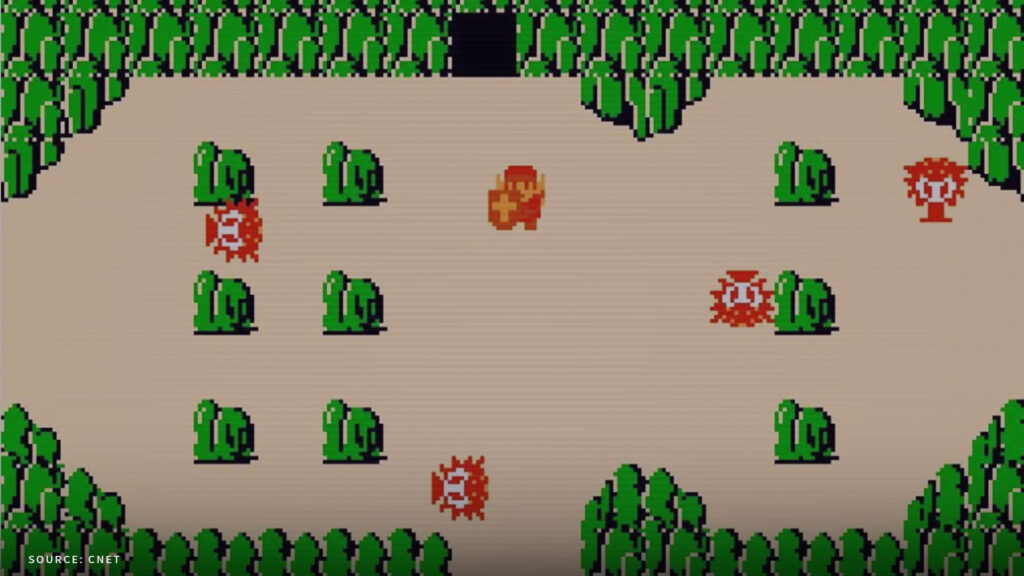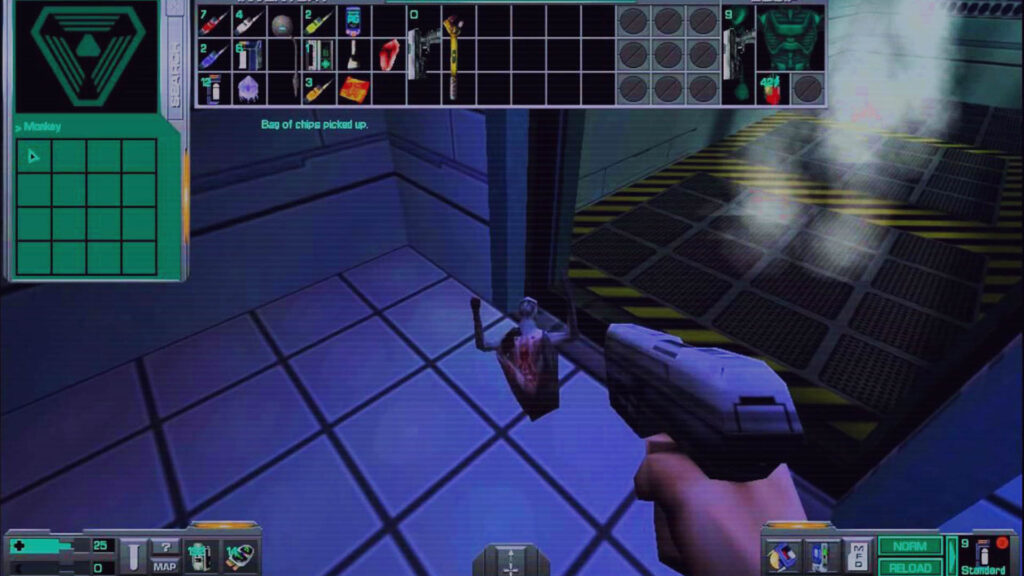The general rule of thumb for finding a game that might catch your interest, is looking at a genre you already find enjoyable, or ─ as many people tend to say ─ feel at home with. However, the trend of blending together elements from different gaming genres into new hybrid experiences has become increasingly common in modern video game design. Thoughtful implementation can lead to innovative gameplay, but also risks incoherence or dilution of beloved genres. On the other hand, success of a specific genre kicks off a wave of similar games with mixed qualities which can lead to a saturated market. Recently, the blending has accelerated even further, with “kitchen sink” games aiming to provide a little bit of everything for wide appeal.
Historically speaking, game genres were once largely distinct entities. The late 1970s and early 80s saw the rise of archetypal genres like platformers (Super Mario Bros), fighting games (Street Fighter), and adventure games (The Legend of Zelda). However, the mid to late 80s marked the first major steps towards genre-blending. The release of The Legend of Zelda in 1986 was revolutionary for fusing real-time combat with elements of exploration, inventory management, and character growth traditionally found in RPGs. It sparked increased experimentation in blending genres to create new gameplay experiences. Series like Castlevania and Metroid took the platforming genre and added RPG and adventure elements, which, over time, made blending RPG mechanics into other genres more popular.
The 90s brought further hybridization as developers pushed boundaries. Iconic examples include point-and-click adventure Full Throttle with action driving sequences, turn-based strategy XCOM with base building, and JRPG Chrono Trigger with active time battles and multiple endings influenced by player choices. Developers were enhancing core genres by thoughtfully blending in mechanics from other styles. The 2000s explosion of 3D gaming and shared world games provided more opportunities for genre crossover. Titles like Deus Ex and System Shock 2 demonstrated the viability of combining FPS gameplay with RPG mechanics like dialogue trees, inventory systems, and custom skill builds. Open world games allowed for blending of driving, shooting, exploration, simulation, and RPG systems. Genre lines are further blurred with emergent gameplay in shared persistent online worlds, indie experiments, and big budget efforts to appeal to mass audiences. While genre-blending is not entirely new, it’s getting more common and experimentation continues to accelerate.


Blending genres together thoughtfully can lead to incredibly fresh and innovative gameplay experiences that feel entirely novel. By fusing the mechanics from multiple styles, developers can create new synergies and emergent interactions. A prime example of this is action RPGs like the Diablo series, which combine satisfying hack-and-slash combat with in-depth loot systems, skill customization, and other RPG elements. The result is a highly addictive gameplay loop that keeps players engaged across hundreds of hours. Survival games like Subnautica also demonstrate how adding crafting, base building, and even horror to traditional underwater exploration leads to a uniquely compelling experience. Another major advantage of genre-blending is the ability to appeal to players with diverse tastes and preferences. Rather than having to play multiple focused games in different genres, hybrids allow players to get their fix of several styles they enjoy in one title. For instance, RPG fans who also love post-apocalyptic settings can satisfy both interests in a game like Fallout.
Adventure game lovers who want more action can enjoy the blend of storytelling and hack-and-slash combat in a title like The Witcher 3. Even strategy purists have found renewed excitement in titles like XCOM and Mario + Rabbids that add turn-based tactics to new scenarios. Fusing genres provides a way to attract interest from players across the spectrum. Additionally, thoughtful genre-blending gives developers a way to differentiate their games and stand out in an increasingly crowded and saturated market. Rather than sticking to established genre formulas, they can reinvent and mash up mechanics in unexpected ways. Just take a look at how Fornite innovated battle royal shooters by blending last-man-standing action with sandbox construction and progression elements. Upcoming (indie) games like Palworld would not get nearly as much attention if they strictly adhered to standard genres. The novelty of genre fusion makes marketing and creating a unique identity easier for studios.
Take a look at Hades, one of the most beloved and well known indie games of recent years, if not all time. It combines roguelike and action genres superbly and the RPG and story elements are thoughtfully woven in without overshadowing the tight gameplay. This fusion works because the combat and progression synergize beautifully and the RPG systems enhance combat options without needless complexity. Even in a market full of rogue-likes and -lites, Hades managed to stand out due to polish and attention to minor details, which can be easily seen in its strong artistic choices and even the incredible soundtrack. For many other games, ineffective execution, rather than the fundamental idea of genre-blending, is often the issue.
Combining too many disparate elements runs the risk of creating an incoherent mess rather than a cohesive experience. If not executed carefully, mechanics from different genres can feel disjointed or work against each other, leading to an unfocused final product. For example, many criticized the open world game Metal Gear Solid V as feeling bloated and empty due to its vast scale despite strong core stealth gameplay. It is still a great game but adding too many features without clear purpose dilutes the overall vision. In addition, some might argue genre-blending water down what makes specific game genres compelling when done without care. For instance, excessive dialogue trees may hamper the minimalist storytelling that defines a platformer; Survival horror games rely on tight ammunition scarcity, so combining them with action shooter elements can damage that tension. While innovation is good, being too ambitious with fusion can lose sight of the special sauce that made certain genres work.
Lastly, a common criticism of genre-blending is that the final products become “jacks of all trades, masters of none.” When appealing to many player interests and mixing various mechanics, games risk failing to fully deliver on any one genre promise. For example, a platformer with crafting may end up with shallow platforming challenges and repetitive crafting systems in the process of blending them together. Players who love focused experiences argue hybrids rarely execute as well on individual elements compared to specialized or traditional games. An example for this could be seen with Bethesda’s latest RPG-leviathan Starfield, which, besides a lack of convincing storyline, left fans of their previous games missing essential role playing elements. Instead it was a mix of toned down survival aspects, ubiquitous gunplay and lackluster character development one would generally expect in a RPG. On paper, it could be an endless gameplay experience but in reality, the muddiness of multiple gameplay elements just didn’t click together. The blend just isn’t to everybody’s taste, which is ironic considering how spread out the ingredients are.
At the end of our article we’re taking a look at two things combined: an ambitious case study in genre-blending and one of the most anticipated games on Steam: Palworld. Officially released into Early Access on the 19th of January 2024, Palworld combines elements from various popular gaming genres: creature collection reminiscent of Pokémon, farming and crafting systems akin to Stardew Valley, first-person shooter combat, hunting, and open world exploration with added sandbox building ─ quite a lot to take in. The fusion of monster taming, simulation and action, and aims to provide emergent gameplay. For a game still in development, the execution remains to be seen because the sheer range of mechanics risks tonal dissonance or simply lack unity, if not handled carefully. For example, the cute creature collecting contrasted with realistic violence could feel disjointed and not what fans of monster taming games are looking for.
Trying to blend so many genres poses risks threatening to overwhelm the development team, like difficulty balancing and bug testing such large-scale mechanics. Additionally, scope creep and a lack of vision could make the final product feel unfinished; Wide as an ocean but deep as a puddle, ending up as another “jack of all trades”. However, if Pocketpair pulls it off ─ and the rising numbers of positive reviews on Steam supports this ─ the uniqueness could make Palworld a huge hit. No other major game has attempted to combine all these genres in one package. The novelty could attract a wide audience but seamless execution across all gameplay systems will be the key challenge.
In closing, genre-mixing exemplifies the delicate balance between innovation and focus in game design when developers must thoughtfully weigh synergies and friction between genre elements. Both, genre-blending and genre-specialization, can produce great games when done intentionally. It might also help to keep in mind that modders will come up with their own, either specialized or simplified version, that suits their needs. Ultimately though, quality execution matters more than chasing novelty for its own sake ─ Baldur’s Gate 3 made this perfectly clear.

















